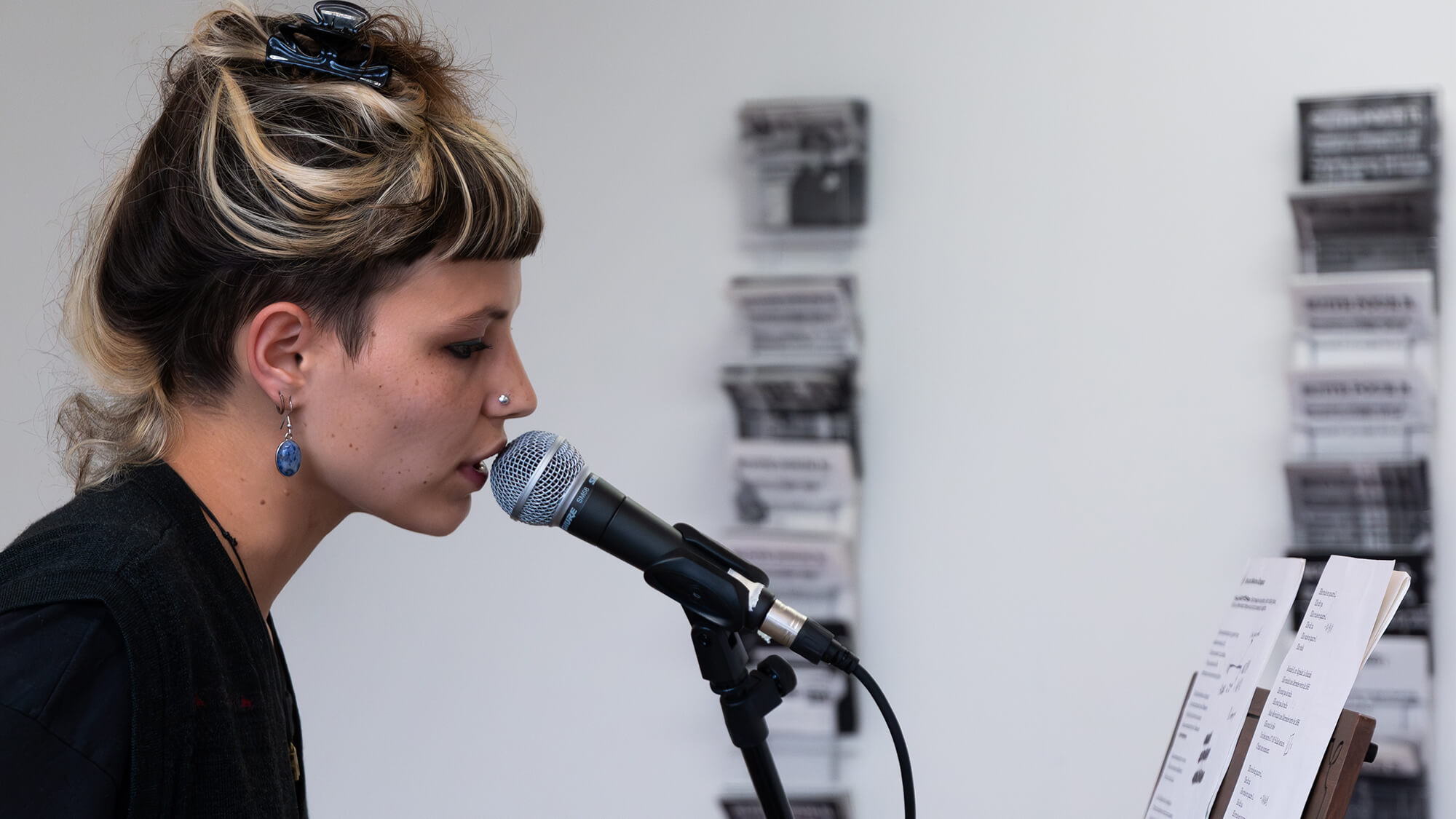%20Michael%20McClanathan-02.webp)
Dial-A-Poem, 1968 - 2012
Modified telephone, 15 x 27 x 23 cm
Edition 2/12
Work presented as part of the exhibition Echos d'une collection - Works by Frac Franche-Comté
Dial-A-Poem originated at New York's Architectural League in 1968, was exhibited at Chicago's Museum of Contemporary Art in 1969 and was part of the Information exhibition at New York's Museum of Modern Art, curated by Kynaston McShine, in 1970. In the 1970s and 1980s, I released a series of 50 LP and CD albums entitled The Dial-A-Poem Poets, encouraging people to create their own Dial-A-Poem and use excerpts from these albums with their local poets. I've been working with sound engineer Bob Bielecki for over 40 years.
In 2012, as part of the Ecstatic Alphabets exhibition at the Museum of Modern Art in New York, curated by Laura Hoptman, there was a Dial-A-Poem retrospective. I chose 80 poets and 200 poems from over 5,000 poem recordings in the archives. Callers, thanks to the new technology that allowed us to digitally receive an unlimited number of calls, randomly accessed the 200 poems. In 1968, we had 12 landlines with industrial-sized answering machines. There were four telephones in the MoMA gallery, with the 200 poems on a computer chip in each one, accessible at random.
Dial-A-Poem 1968-70 was unique in that it introduced the telephone as a means of mass communication. On January 12, 1969, we received a quarter-page article in the New York Times, mentioning the telephone number twice. We received millions of calls. On the first day, we issued 250,000 busy signals at once, and the phone company threatened to cut us off. This success led to many more reviews in newspapers and magazines, which always mentioned the phone number: Daily News, New York Post, Harpers Bazaar, Time, NBC's The Today Show and The New Yorker, each time with the phone number, which encouraged more people to call. If a caller got bored with John Ashbery, he'd hang up and call again, and get John Cage, William Burroughs, Jim Carroll. I also discovered that creating an unattainable desire is the ultimate success.
With Dial-A-Poem, I came across the phenomenon of the telephone as a new medium, linking three things: advertising, a telephone number and content accessible to a wide audience. Before Dial-A-Poem, the telephone was used on an individual basis. The success of Dial-A-Poem gave rise to an industry of Dial-A-Something: Dial-A-Joke, Dial-A-Horoscope, Dial-A-Stock Quotation, Dial Sports, right up to the 900 pay-per-use number, phone sex and ever more extraordinary technology. Dial-A-Poem, coincidentally, ushered in a new era in telecommunications.
John Giorno on Dial-A-Poem, 2012
John Giorno
1936 - 2019
New York
John Giorno was a poet, performer and visual artist. In 1963, he was the young lover Andy Warhol filmed asleep for his first film, Sleep. Other collaborations followed with Brion Gysin, Robert Rauschenberg, Les Levine... He created Dial-A-Poem at New York's Architectural League in 1968, which was later included in the group show Information at MoMA in 1969-70. The work is still reproduced worldwide.
John Giorno's poetry, like all his work, is nourished by his commitment to the war in Vietnam, police violence and the homosexual cause. It is also imbued with his Buddhist practice. In 1971, he traveled to India and Nepal with Allen Ginsberg, presented the Dalai Lama with a copy of his book Balling Buddha and met his master, Dudjom Rinpoche.
In the late 1960s, he used his non-profit association, Giorno Poetry Systems, for the creation of artworks and as a political organization. By 1972, the label of the same name was releasing over forty vinyl records, cassettes, videopacks and CDs featuring a wide range of artists, musicians and poets. In 1984, John Giorno reformulated the association to include the AIDS Treatment Project, a mechanism for providing financial and other assistance to artists suffering from AIDS. In the early 2000s, this structure became the Poets and Artists' Fund.
Recent artists with whom John Giorno has collaborated include Pierre Huyghe, Michael Stipe, Rirkrit Tiravanija and Ugo Rondinone. A major retrospective of his work, I ♥John Giorno, was organized by his companion, Ugo Rondinone, for the Palais de Tokyo in 2015 before being replayed in 13 New York spaces in 2017.
Other artists

Marina Rosenfeld
CollectifFacteur-01.webp)
Collectif Facteur

Judith Hamann & James Rushford
Other artists

Charlotte Centelighe

Claire Frachebourg

StephaneDondicol-01.webp)
